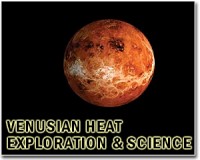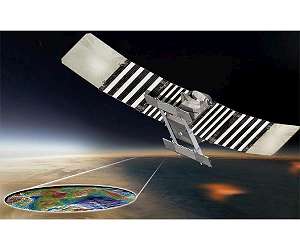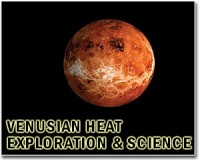
Scientists find ‘ring of fire’ on surface of Venus (Image Credit: SNN)
Scientists have discovered a “ring of fire” on the surface of Venus — a belt of active mantle plumes.
Unlike Earth’s Ring of Fire, which is fueled by plate tectonics, the ring of fire on Venus is caused by vertical hotspot volcanism, the same phenomenon that produced the Hawaiian Islands.
Researchers discovered the new ring of fire after conducting an extensive survey of Venus’ coronae population. The team of scientists detailed their discovery this week in the journal Nature Geoscience.
More than 30 years ago, NASA’s Magellan spacecraft captured images of dozens of unusual circular structures, called coronae, on the surface of Venus. Ever since, scientists have been trying to decipher their geological origins and the underlying conditions that shape them.
Planetary scientists agree that coronae are produced by mantle plumes.
Hot molten rock is carried upwards by convection currents, forming a mushroom-like shape at the top. As the rising column of molten rock melts the crust, the head of the plume expands, forming the circular structure.
Eventually, the plume may sink back down beneath the rim of the coronae, causing the structure to contract and crack.
Despite the seemingly homogeneous formation process, the topography coronae isn’t uniform. For the new research, scientists used computer models to study variation in surface topography of different coronae and suss out links to geological commonalities beneath the surface.
“Every corona structure has a specific signature that indicates what is going on beneath it,” Anna Gulcher, a doctoral student at ETH Zurich, said in a news release.
Coronae positioned above active mantle plumes look different than coronae situated atop an inactive plume that has sunk and cooled.
When researchers classified and mapped the two different types, they found the majority of coronae above active mantle plumes were situated along a continuous belt — a kind of ring of fire, only fueled by volcanism.
As for why the coronae are organized in this pattern, and what such behavior says about Venus’ mantle, researchers aren’t sure.
With more observational data and more powerful simulations, researchers said they hope to delve deeper into the origins and evolution of Venus’ coronae-forging mantle plumes.
According to the study’s authors, Venus could serve as a model for studying the kind of hotspot volcanism that may have dominated early Earth.
Related Links
Venus Express News and Venusian Science
|
Thanks for being there; We need your help. The SpaceDaily news network continues to grow but revenues have never been harder to maintain.With the rise of Ad Blockers, and Facebook – our traditional revenue sources via quality network advertising continues to decline. And unlike so many other news sites, we don’t have a paywall – with those annoying usernames and passwords.Our news coverage takes time and effort to publish 365 days a year.If you find our news sites informative and useful then please consider becoming a regular supporter or for now make a one off contribution. |
||
|
SpaceDaily Monthly Supporter $5+ Billed Monthly |
||
paypal only![]()
![]()
SpaceDaily Contributor
$5 Billed Once![]()
credit card or paypal

![]()
Exploring the Deep Truths of Venus
Pasadena CA (JPL) Jul 09, 2020
Imagine Earth. Now fill the skies with thick, Sun-obscuring clouds of sulfuric acid; boil off the oceans by cranking up the temperature to 900 degrees Fahrenheit (nearly 500 degrees Celsius), and boost the air pressure high enough to flatten you like a pancake. What you now have is Venus, a rocky planet similar in size to Earth but different in almost every other way.
How these “sister planets” evolved so differently has been a burning scientific question for decades, and a proposed mission called … read more
– Advertisement –









